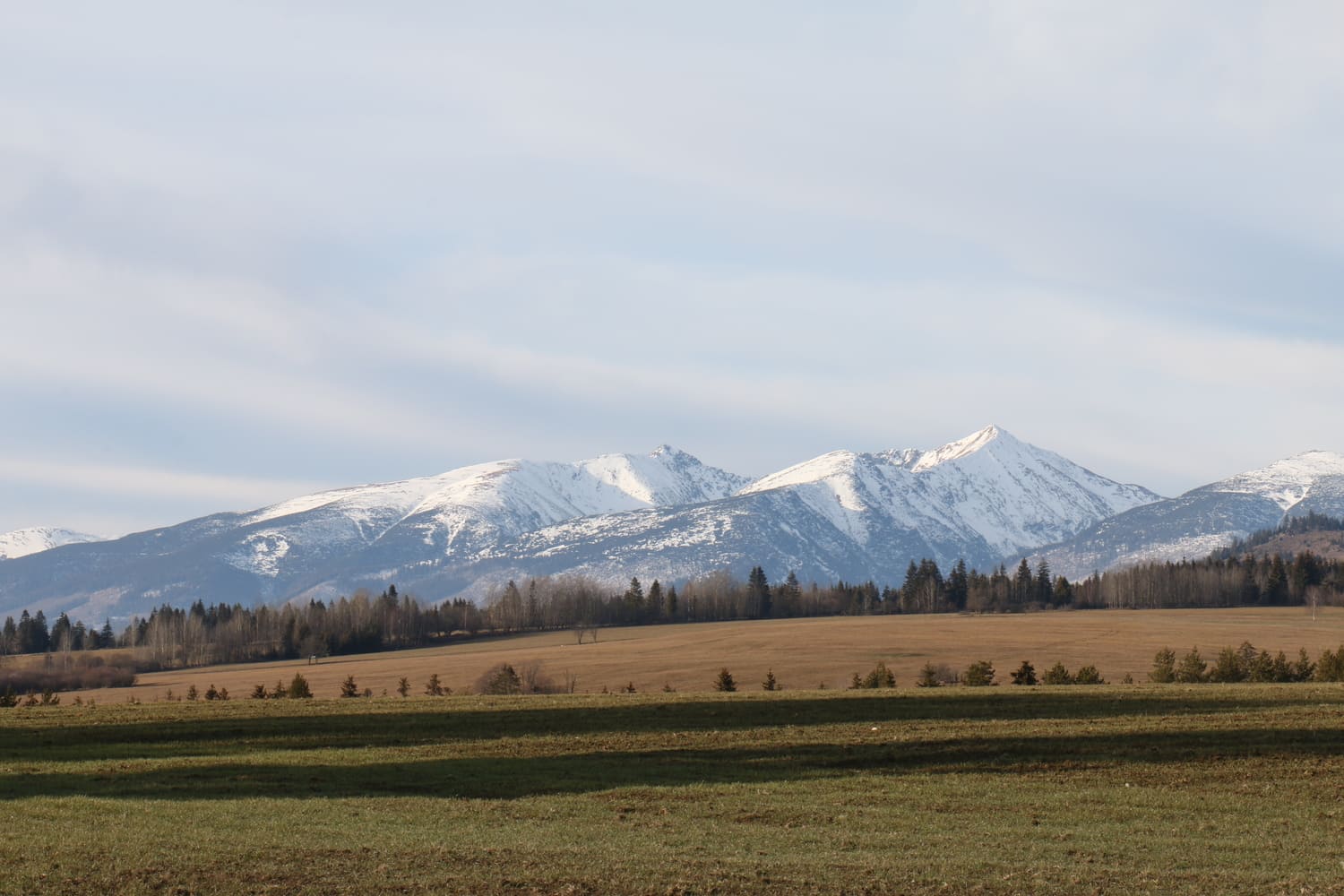
In the beginning of 2023, I had the opportunity to tick off yet another country on my journey to visit every country in the world – Slovakia, number 75 on my country count list. I wasn’t really sure what to expect from the this seemingly small and uninteresting country in Central Europe, but how wrong I was! And that’s the beauty of travel! Slovakia is far from the tourist path of Western Europe and has an impressive mountainous landscape (I was not expecting it) consisting of the Tatras Mountains covering a large part of the lands surface. The architecture is a weird blend between old gothic and medieval castles combined with the social realism architectural style from the former communist state of Czechoslovakia.
Why do people go to Slovakia?
The nature is one of the main reasons people choose to visit Slovakia, which gives you the choice to go skiing in winter and hiking in summer. Visiting tourist are many from the neighboring countries of Poland and especially Hungary lack. Apart from the nature, Slovakia offers dozens of castles and charming small cities which are worth visiting. Since the capital Bratislava is located only a short boat ride down the Danube river from the significantly more popular Vienna, many tourists choose to visit it as a day trip from the Austrian capital.
Best Place In Slovakia
Tatranská Lomnica Located in the High Tatras mountains, Tatranská Lomnica is good choice if you want to experience the gorgeous mountain views of the High Tatras Mountains. In the winter it is one of the best places to go skiing in the whole of Slovakia, with the longest slope being an impressively 6.5 km long from 2 196 m above sea level. The slopes on higher altitude I would say are more suitable for advanced skiers while the lower slopes are more beginner friendly. There is a gondola that can take you up to the peak of the mountain, known as Lomnický Peak (or Lomnický štít in Slovak)at 2634m, where you find a small cafe. They even offer the possibility to overnight at the top. You can either book the gondola in advance or try to book it on site. However, I highly recommend that you book you tickets in advance, as the spots were sold out when I tried to book it on site.
Information on tickets purchase can be found here:
https://www.vt.sk/en/resort/resort-info/cableway-trips/lomnicky-peak
During the summer months Tatranská Lomnica offers you many opportunities for hiking and exploring, which makes the mountain town of Tatranska Lomnica an all year resort, the town itself boasts charming architecture, with a range of accommodations and eateries catering to all tastes. The cable car to Lomnický štít, is a major attraction in also in the summer, providing stunning panoramic views.

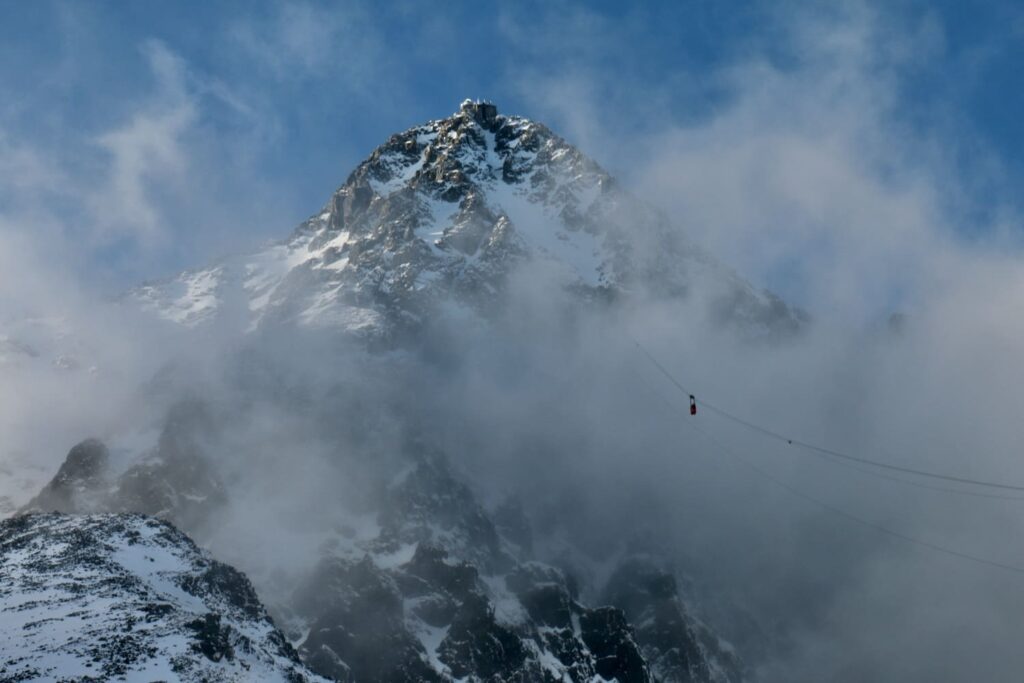
Štrbské Pleso. Not far from Tatranska Lomnica, lies Štrbské Pleso, a place renowned for its serene mountain lake with the High Tatras mountains as a beautiful backdrop. Here there are several luxurious hotels with numerous spa facilities and clean mountain air. Hotels here are pretty expensive, The lake itself, surrounded by majestic peaks, is a perfect spot for leisurely walks or picnics, making it a year-round attraction. In summer the area is a paradise for hikers with well-marked trails. In winter, Štrbské Pleso is cross-country skiing destination with well prepared cross country skiing trails.
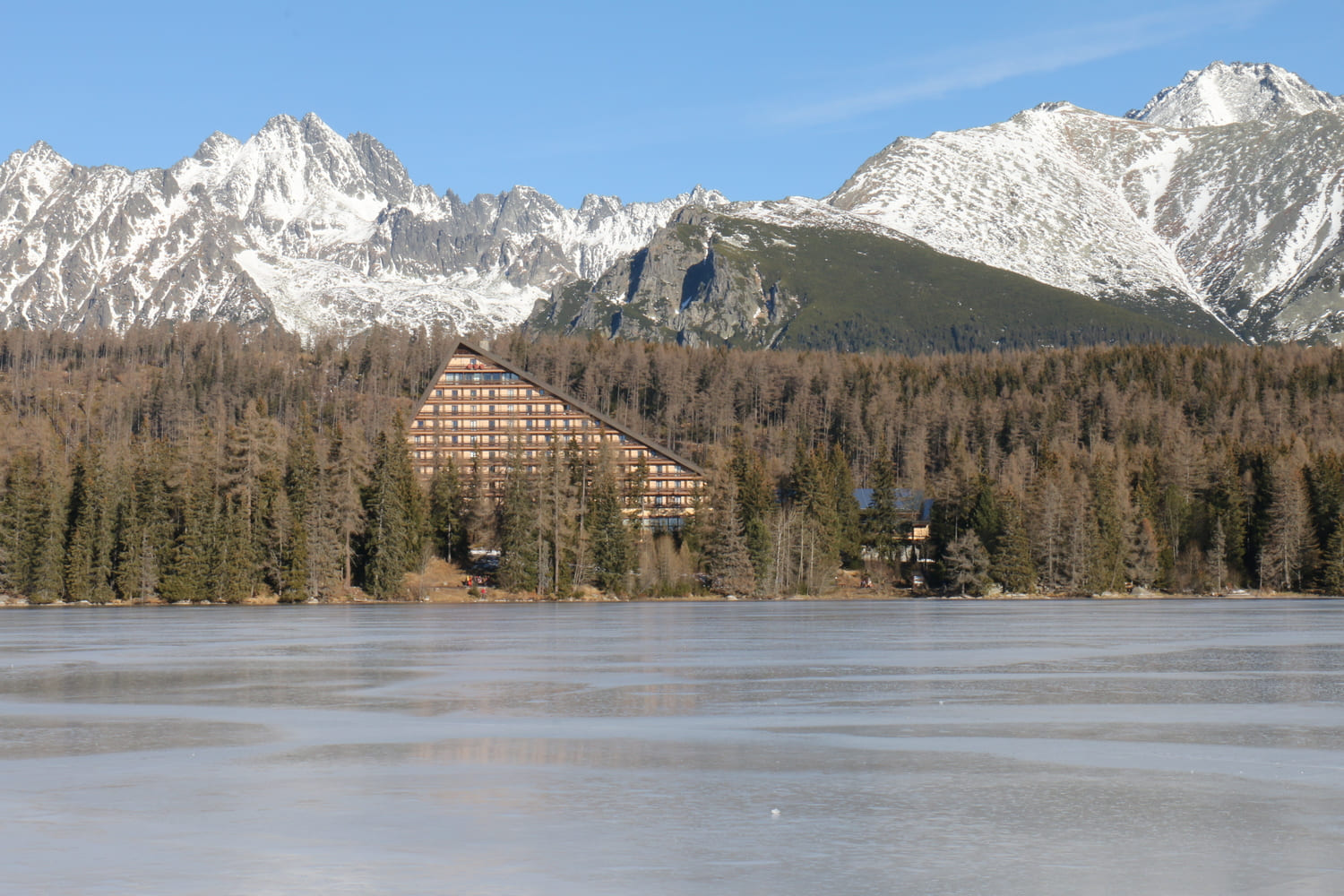
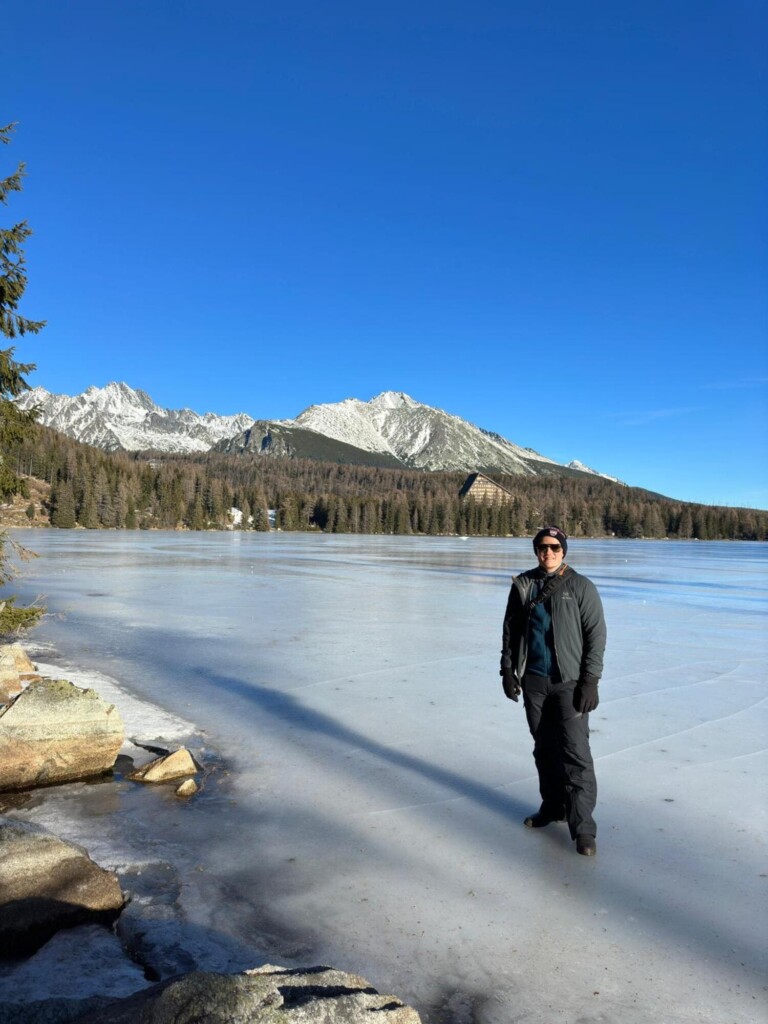
Orava Castle. Approximately 1h 20 min drive from Štrbské Pleso lies an interesting 13th century castle which is well worth a visit. Perched on a high rock above the Orava river, Orava Castle is one of Slovakia’s most magnificent medieval castles. Its history dates back to the 13th century, and it has undergone various reconstructions, reflecting Gothic, Renaissance, and Baroque architectural styles. The castle is famous for its role in the 1922 film Nosferatu, adding to its allure. The view from the top and is pretty sweet with the High Tatras mountains visible in the distance. Note: Tickets are bought down below the castle and not at the entrance to the castle. Do not make the same mistake as I did and think the opposite and you will end up needing to walk down and up the hill again (which is pretty steep).
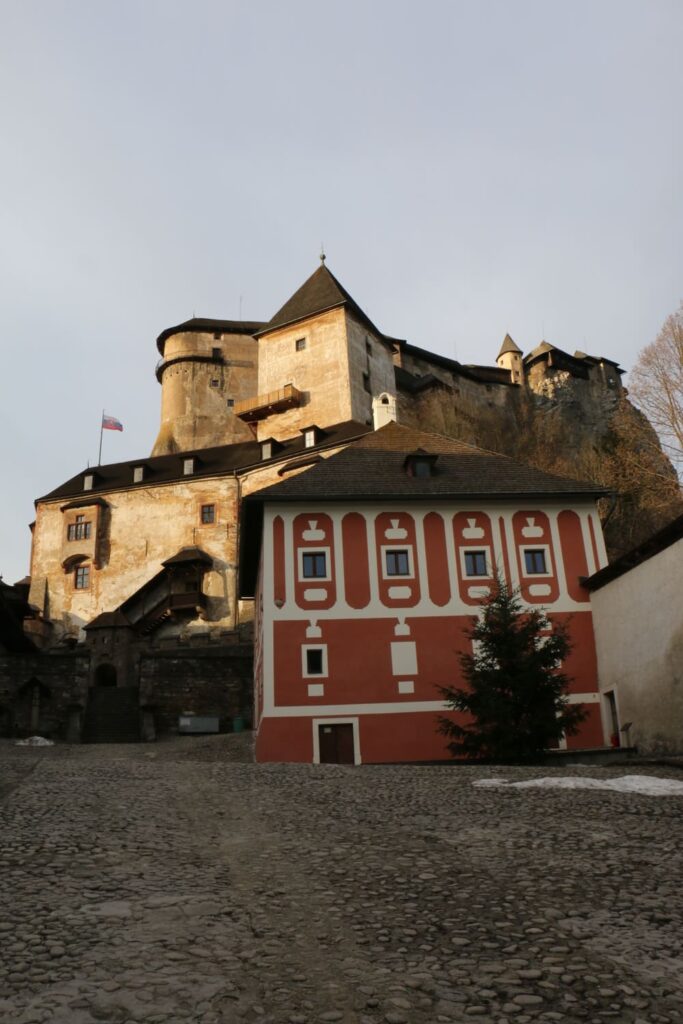
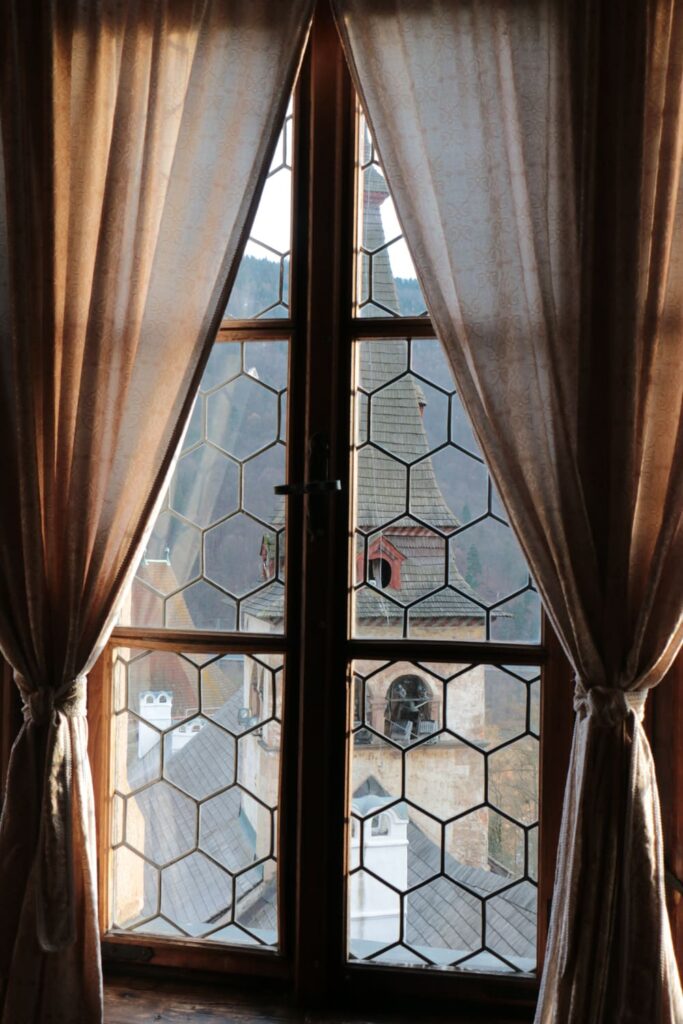
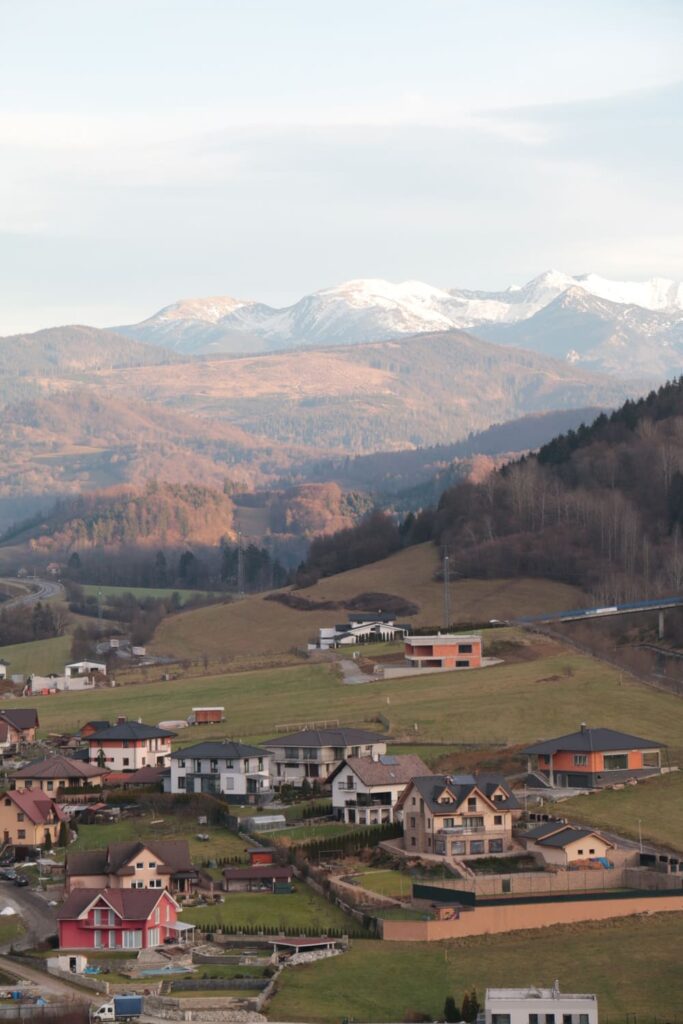
Spiš Castle. Only 40 minutes by car from Tatranska Lomnica on the road to Kosice, lies Spiš Castle, one of Central Europe’s largest castle complexes and a UNESCO World Heritage Site and a symbol of Slovakia’s medieval heritage. The castle is just like Orava castle perched on a high hill and spectacularly visible from the small town of Spišské Podhradie below. The castle mainly consists of ruins, which offer a glimpse into the past, however in contrast however Orava Castle, I found the Spiš Castle itself to be a somewhat underwhelming experience, however what makes the trip worth is beautiful view of the surrounding landscape and nearby town of Spišské Podhradie seen from above.
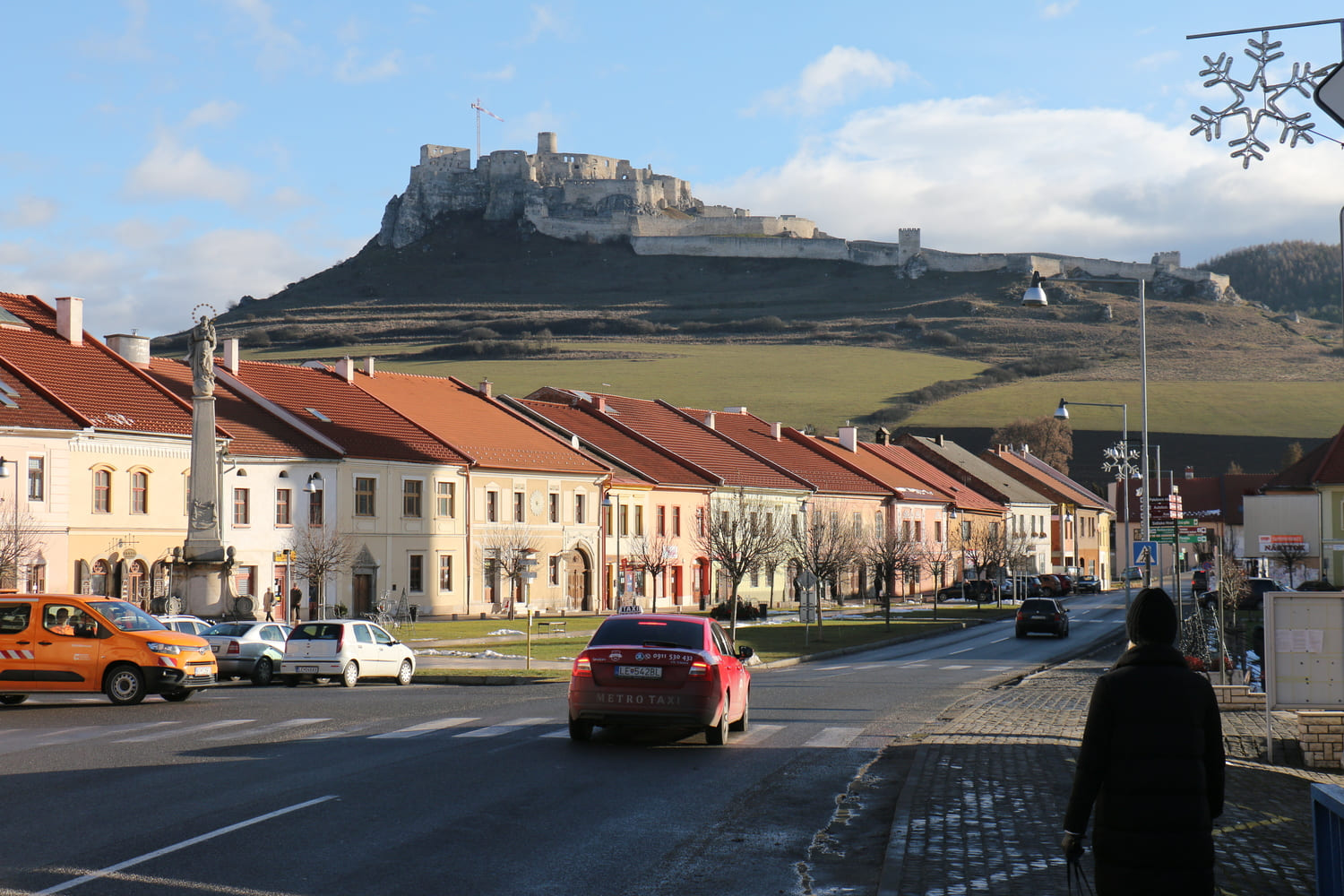
Kosice. Kosice, the second-largest city in Slovakia, is an interesting blend between old Gothic and Baroque-style archtecture and Communist-style brutalism on the other. The city’s heart is a well-preserved historical center, featuring the stunning St. Elisabeth Cathedral, the largest church in Slovakia, with endless of cafes and restaurants. I would suggest spending about 2 nights in Kosice to full explore the city and the surrounding cities that are worth visiting. To be quite frank the city itself doesn’t offer that much to do, apartment from visiting the endless cafes and restaurant, however my tip to you would be to try to plan a head and try to catch a ballet show at the National Ballet Theatre, while you are in town.
Where to stay: Vila Terrasse – is a beautiful little boutique hotel, artistically decorated with antique furniture. Parking is free and the hotel is also reasonably priced at 90 euros a night. I highly recommend that you stay here.
Kapušany Castle. Roughly a 45 minute drive from Kosice lies the ruins of Kapušany Castle, set atop a hill (just like all castles in Slovakia), offering a panoramic view of the surrounding countryside. To get there you need to drive to the foot of hill and from there hike for roughly 45 minutes through the forest to reach the castle. Just like the Spis Castle, the Kapušany Castle is also in ruins, however the hike through the forest and the view from the top makes the trip worth.
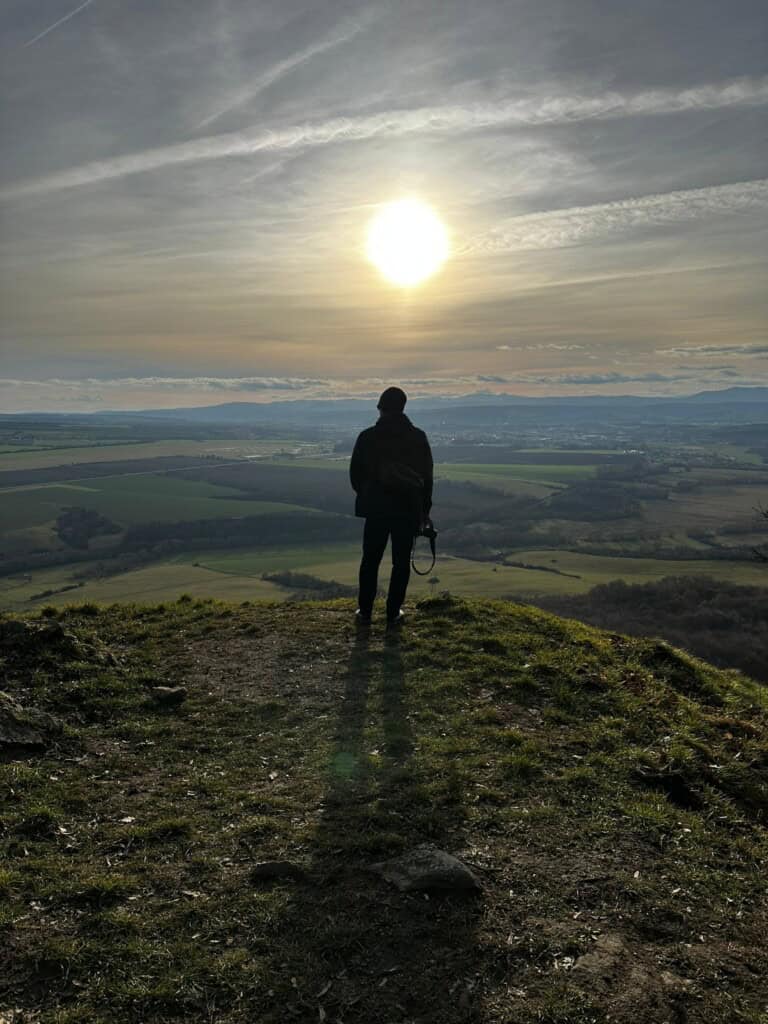
Presov. After you have hiked the Kapušany Castle make sure to stop by the city of Presov, located just a 15 minute ride from the Castle. The city has a well-preserved historical center, featuring a mix of Gothic, Renaissance, and Baroque architecture, as many cities in Slovakia. Furthermore, there are many restaurants and cafe, so its a perfect spot to grab a coffee or something to eat after your hike. The main attraction is the beautiful St. Nicholas Cathedral located it the city center.
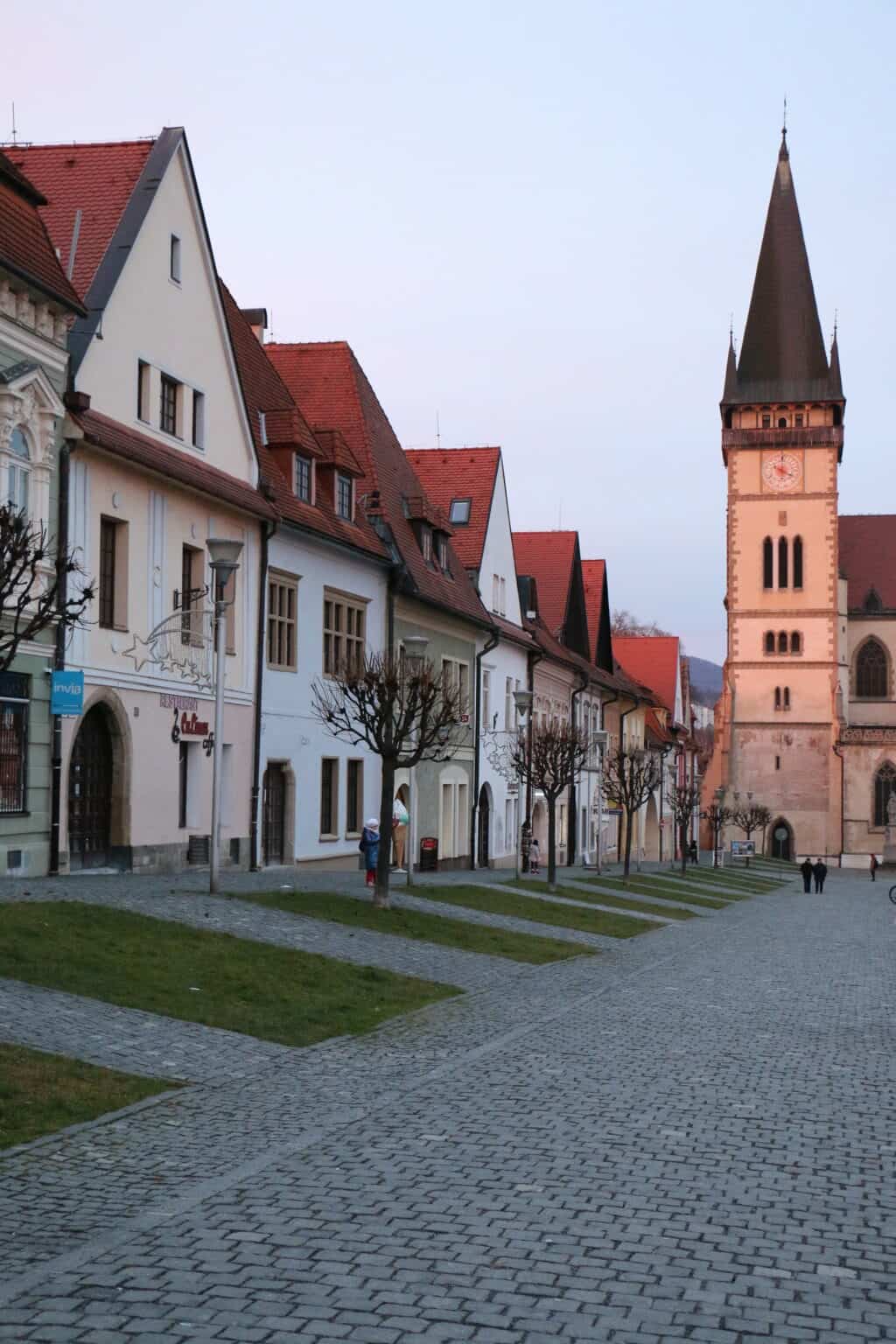
Bardejov. Bardejov is another good day trip alternative from Kosice, its a UNESCO World Heritage Site, due to its well-preserved medieval town center and stunning Gothic architecture. The town’s centerpiece is the Basilica of St. Egidius, known for its impressive collection of altars. The historical town square, surrounded by original burgher houses and the old town hall, is a great place to get some instagrammable photos (check out mine below).


Bratislava Bratislava is well known as a day trip from the Austria capital Vienna located only a short trip down the Danube river. The city is known for its lively cultural scene, historic Old Town, and the iconic Bratislava Castle, which overlooks the Danube River. The Old Town is a maze of narrow streets, filled with cafes, shops, and historical buildings like the Old Town Hall and St. Martin’s Cathedral. The city also boasts a vibrant nightlife, diverse culinary scene, and numerous green spaces, making it a dynamic urban destination.
Banská Štiavnica Banská Štiavnica, a historic town in central Slovakia, is a UNESCO World Heritage Site renowned for its mining history and unique architecture. It’s also known as the most beautiful town in Slovakia. Once a prosperous mining town, it’s now a treasure trove of historical and architectural gems, including the Old Castle and the Church of St. Catherine. The beautiful architecture combined with the surrounding landscape consisting of rolling hills gives Banská Štiavnica a gorgeous setting.
When Is The Best Time To Go To Slovakia?
The best time to go to Slovakia is either Winter or Summer. The summer months are perfect for a wide range of outdoor activities such as hiking or mountain biking while the Winter offers skiing in one of Europe’s least explored mountain ranges. However, in my opinion, Slovakia is a year-round travel destination, so here is what you can expect from each season.
Spring
Spring, stretching from March to May, starts with a lingering chill from the winter months. As the season progresses, the temperatures gradually rise, and the countryside starts to bloom, transforming the landscape into a vibrant tapestry of colors. Late spring is particularly pleasant for sightseeing and exploring the urban centers, as the weather is warm but not overly hot, and the tourist crowds are still moderate.
Summer
Summer, lasting from June to August, is the warmest and most vibrant time in Slovakia. These months are perfect for a wide range of outdoor activities, including hiking in the mountains, exploring national parks, and enjoying the many cultural festivals that take place. However, this is also the peak tourist season, so popular destinations can be quite busy, and prices for accommodations may be higher.
Autumn
Autumn, from September to November, ushers in cooler temperatures and a gradual change in the scenery as the leaves turn to rich hues of red, orange, and yellow. This is a great time for those who prefer a quieter travel experience, as the tourist crowds dwindle and the pace of life slows down. The cooler weather is ideal for hiking and exploring the countryside, and the fall harvest brings a bounty of local food and wine to enjoy.
Winter
Winter, from December to February, transforms Slovakia into a winter wonderland. The country’s mountainous regions offer excellent opportunities for skiing, snowboarding, and other winter sports. The snow-covered landscape is stunningly beautiful, particularly in the rural and mountainous areas. Cities and towns often have charming Christmas markets, and the shorter days are brightened by festive lights and decorations. This season is colder and days are shorter, but for winter sports enthusiasts and those who appreciate the serene beauty of a snowy landscape, it’s a magical time to visit.
Is It Safe To Travel To Slovakia?
Slovakia is a safe destination for travelers. The country has a low crime rate, especially in terms of violent crimes, which are rare. Petty crimes like pickpocketing or bag snatching can occur in tourist areas and public transport, so it’s advisable to keep an eye on your belongings and be cautious in crowded places. Slovakia, situated beside Ukraine, which unfortunately faces conflict due to Russian aggression, benefits from a reduced risk of military strife in the region due to its membership in NATO.
The police force in Slovakia is efficient and reliable. Tourists can feel secure knowing that help is accessible if needed. Emergency services are also well-developed, with a good response rate.
Road safety in Slovakia is on par with most European countries. However, it’s important to be cautious while driving, especially in winter due to icy conditions. Public transport is generally safe and reliable.
Natural hazards are minimal, but it’s always wise to stay informed about local weather conditions, especially when participating in outdoor activities like hiking or skiing.
Overall, Slovakia is a safe destination, but like any travel, exercising common sense and staying informed about local laws and customs is important for a hassle-free experience.

Is It Cheap To Travel In Slovakia?
Slovakia, often overshadowed by its more famous European neighbors, such as Prag in the Czech Republic or Vienna in Austria, emerges as a hidden gem for travelers seeking a budget-friendly yet enriching experience. The country is a lot more affordable compared to its Western neighbors.
Accommodation: In Slovakia, you’ll find a range of options, from budget hostels to mid-range hotels, at prices that are generally lower than in Western Europe. For instance, a comfortable hotel room in Bratislava might cost half of what you’d pay for a similar room in Paris or Amsterdam.
Dining: Slovakian cuisine is both delicious and easy on the wallet. A typical meal at a local restaurant will cost considerably less than a comparable meal in Western European cities. For budget-conscious travelers, this means enjoying quality meals without the steep prices.
Transportation: Public transport in Slovakia is not only efficient but also surprisingly affordable. Train and bus fares across the country are a fraction of what you’d expect to pay in countries like Germany or Belgium.
Attractions: Entry fees for museums, historical sites, and other attractions in Slovakia are modest compared to Western Europe. This affordability allows travelers to explore more without worrying about stretching their budget.
To give a clearer picture, let’s compare some typical costs you might incur in Slovakia versus a Western European country like France:
| Expense Category | Slovakia (Average Cost) | Western Europe (e.g., France) (Average Cost) |
|---|---|---|
| Mid-range Hotel (per night) | $50 – $100 | $100 – $200 |
| Meal at Mid-range Restaurant | $10 – $15 per person | $20 – $30 per person |
| Public Transport (one-way ticket) | $1 – $2 | $2 – $4 |
| Museum Entry | $5 – $10 | $10 – $20 |
